Sept. 6 to 12, 2024
3 Elul, 5784 • Shoftim Vol. 23, No. 30
Reach the Star: Editor@TheJewishStar.com 516-622-7461 x291



Sept. 6 to 12, 2024
3 Elul, 5784 • Shoftim Vol. 23, No. 30
Reach the Star: Editor@TheJewishStar.com 516-622-7461 x291


CEO, Jewish Federation of Los angeles

Our hearts hurt. Our pain is real. It feels like failure.
For 330 days, Hersh Goldberg-Polin languished in the dark. For 330 days, he fought back against despair and kept striving for life. For 330 days, he suffered, waiting for rescue. For 330 days, his was the face and name we recognized. For 330 days, our thoughts were with him in the muck and the dark. Our thoughts were with Hersh in the tunnel, in the hot oppressive air with yelling and the pounding of artillery in the background. Our hopes were with him. Our sense of righteousness was with him. We girded our strength with him for 330 days.
That’s why on day 331, when we found out that he, Eden Yerushalmi, Ori Danino, Alex Lobanov, Carmel Gat and Almog Sarusi were all murdered by Hamas within 48 hours of
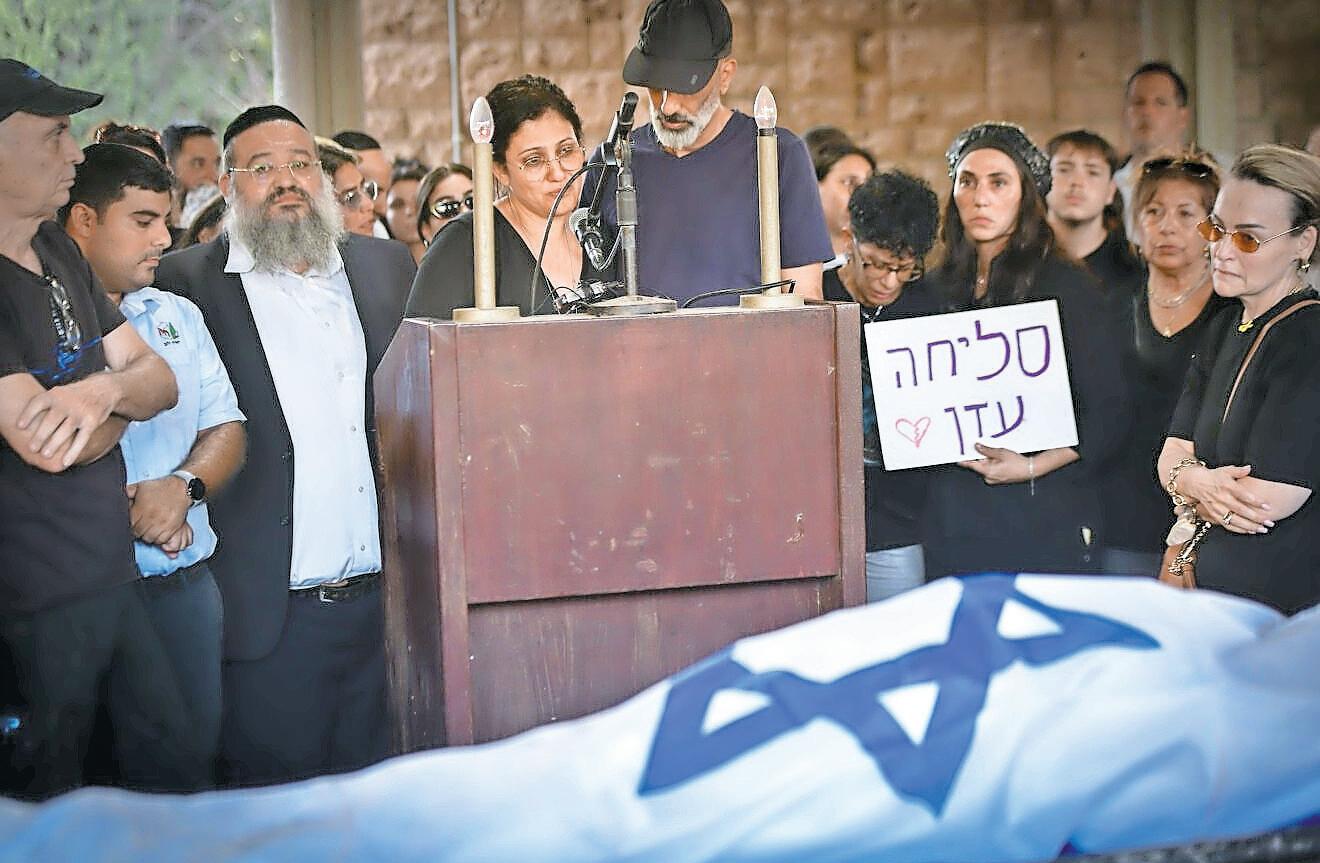
their discovery by the Israeli military, we felt like we failed him.
“I apologize on behalf of the State of Israel that we failed to protect you in the terrible disaster of Oct. 7, that we failed to bring you home safely,” said Israeli President Isaac Herzog in Hebrew at Hersh’s funeral. “I apologize that the country you immigrated to at the age of 7, wrapped in the Israeli flag, could not keep you safe.”
It’s easy for us to feel failure in this moment; we see it everywhere. We feel like we fail when we can’t end this war with victory and bring our loved ones home. We feel like we fail as 60,000 Israelis are still living in hotels and hostels instead of their homes in the north. We feel like we fail when children playing soccer are eviscerated by a rocket. We see failure in the United States, where our universities do not protect Jewish students and faculty. We feel like the media has failed us by allowing hate-filled disinformation to libel the Jewish people. We feel like the world has failed us, again, by blaming Israel for its own existence, blaming Israeli women for their
S. Tobin
JnS Editor-in-Chief

Students returning to colleges across the United States are often finding that the war against the Jews on their campuses is hardly over. On the contrary, in round two their ability to live openly as identifiable Jews and supporters of the one Jewish state may be just as dangerous as it was last year.
•At the University of Michigan, Israel-haters not only harassed newly

arriving students but shut down student government to push the school to adopt an illegal discriminatory BDS divestment program.
•At Temple University in Philadelphia, members of the openly antisemitic Students for Justice in Palestine made clear their intentions and strategy by starting the semester with a demonstration outside of the school’s Hillel chapter while waving the flag of the Popular Front for the Liberation of Palestine, a designated foreign terrorist organization. That they would choose to target Hillel, which has, for the most part, not been in the vanguard of the pro-Israel movement but is in most cases simply a communal group for Jewish under-
graduates, says all there is about what it means to be “pro-Palestine” in 2024. These are just two of many examples where anti-Israel agitators have shown that they are prepared to resume the same siege on Jewish campus life that was the hallmark of the 2023-24 academic year in the wake of the Oct. 7 Hamas atrocities in southern Israel that launched the current war. Some university presidents have lost their jobs for their indifference to the surge in Jew-hatred within their institutions; others have voluntarily resigned, albeit under pressure for their actions (or rather, their inaction). But for the most part, the end result from
Continued from page 1
those in charge of America’s elite and sometimes not-so-elite schools remains one in which they regard the problem as navigating between two supposedly equally legitimate interests.
In doing so, they place the right of Jews to live and learn on campus without being attacked for their faith and beliefs as being no more important than the right of those who are allied with the genocidal antisemites of Hamas to openly express their hateful beliefs.
The focus on the presidents of schools also ignores the far more important part that is being played by their lower-level employees who staff diversity, equity and inclusion (DEI) departments that, among other duties, help craft student orientation programs that set the parameters for appropriate behavior. Since these are the very people who help promote the false doctrines of critical race theory and intersectionality that provide an intellectual cover for the hatred of Israel and Jews, resistance against any effort to promote awareness of antisemitism is likely.
Moreover, as we’re increasingly learning, the danger is not confined to the institutions of higher education. The situation in secondary schools and even the lower grades in many places is just as, if not more dire. The educational establishment and teachers’ unions have been captured by leftist ideologues just as ready to falsely label Israel as a “settler/colonialist” and “apartheid” state and to regard it and Jews as “white” oppressors.
The question then arises as to what, if anything, should be different about the response of the Jewish community, organizations, educators, parents and students to this challenge.
Each school and community is different. Some institutions behaved better than others in responding to the way that pro-Hamas mobs tried to take over campuses and create hostile environments for Jewish students and faculty. It’s also true that many schools exhibited no lack of decorum, where the crisis passed without there being much evidence of its impact.
But whether individual school districts are
relatively free of antisemitic and anti-Israel propaganda or where they run rampant, the need for Jews and friends of Israel to think seriously about how to respond to another several months of ongoing siege warfare is imperative. At the college level, the same is true for parents, students and alumni to understand that recycling the community relations strategies of earlier times or merely hoping that the storm will pass or be dissipated by the end of fighting in the Middle East (a doubtful outcome) won’t address the problem.
The unspeakable atrocities of Oct. 7 were a feature of the Palestinian and antiZionist cause, not a bug.
There is no shortage of ideas about what to do.
Some involve withdrawing Jewish kids of all ages from the secular system for education. Some say just abandon the current elite schools to places where more sensible policies are employed or to create new colleges. Others involve pressure campaigns in which funding — either from alumni of specific schools or from the government — would be cut to offending institutions.
There is something to be said for these ideas. But in terms of a broad strategy in dealing with a crisis for Jewish life in America, what is needed is a consensus about basic principles.
The first requires Jews to drop the pretense that the current debate about Israel and antisemitism in American education is one in which there is something to be said for those on both sides of the demonstration lines popping up at campuses across America.
Those falsely accusing Israel of genocide do not “have a point.”
Whatever people think about specific Israeli
military actions, the purpose of the protests in the United States is no different from those of the terrorists who carried out the worst mass slaughter of Jews since the Holocaust on Oct. 7. Whether they call themselves “pro-Palestine” or anti-Zionists, the goal of eradicating Israel — something that could only be accomplished by the genocide of its population — is the same.
No one who cares about the safety of Jews in the US, the greater diaspora or Israel should concede the point that there is a moral equivalence between the Palestinian war to destroy the Jewish state and efforts to defend it.
It is also vital that every Jewish and campus community understand that treating anti-Zionism as a valid idea worthy of debate in the current context is a betrayal not only of Israelis fighting for their lives but of Jewish kids who are caught up in the current political maelstrom. Rather than seek to paper over these differences, we must make it clear that those chanting “from the river to the sea” or cheering on Palestinian terrorism are engaged not just in hate speech but in open incitement to carry out acts of violence against Jews.
Part of that must involve something difficult for many liberal Jews, and especially, the largely failing organizations that purport to represent them. They must drop their acceptance of the moral equivalence between the fight against antisemitism and the entirely dubious cause of addressing “Islamophobia.”
The vast majority of what is now labeled Islamophobia is no more than an acknowledgment of the rampant anti-Jewish hatred among American Muslims and those who claim to represent them. Muslims are not being targeted on college campuses. Jews are.
That also means that the Jewish community must stop relying on failed liberal groups like the Anti-Defamation League and the American Jewish Committee to speak up for their interests. Despite their outsized budgets and impressive public relations campaigns in which they have sought to position themselves as responding to the crisis, such organizations have proven unable to shake off their past allegiance to the same toxic leftist doctrines that created this mess.
Jews need to seek to build new groups and coalitions that understand what is at stake and
own rapes and Israeli youth for dancing with the sunrise.
We can easily feel like failures in a world that has failed itself.
Ours is a long history; we are not strangers to catastrophe, crisis and tragedy. We’ve lost our land; we’ve been tossed about. We have lost so many of our children to killing fields, gas chambers and now tunnels underground. Every prophet in our tradition has given us tochecha, or “rebuke,” warning of our failures and their consequences. Each of them used their fiery rhetoric to excoriate us over our failures of faith, our failures of fidelity and our failures of love.
The greatest failure, however, would be letting failure define us as individuals and as a people. There are forces at work that seek profit and political capital by dividing our community, turning what feels like a catastrophe into bitterness, enmity and hatred for each other.
Division emboldens our enemies. Enmity imperils our future. Effrontery endangers our homeland. Useless hatred for each other threatens to destroy us.
This moment in our history must not define our generation as a failure. Our long path as a people is one of tears — of coping, of hoping, of achieving a better future together.
The Midrash relates that Rabbi Yochanan ben Zakkai and Rabbi Joshua were walking near the ruins of the Temple in Jerusalem, its rocks were smoldering. Rabbi Joshua said: “Woe to us, for this sacred place is destroyed — the place where all of Israel’s sins are forgiven!” Rabbi Yochanan said to him, “My son, do not be distressed, for we have a form of
can move forward with concrete actions to help mitigate antisemitism across America.
Another key point is for those defending Jewish kids to put forward solutions that defend free speech while treating anti-Jewish hate language the same way society deals with racism against other minorities. We must be clear that criticizing Israeli policies or even expressing opposition to Israel’s existence is entirely legal. But calls for Jewish genocide or support for Hamas and its allies should be treated, especially in private venues rather than public squares, the same way authorities deal with advocacy for anti-black racism or support for the Ku Klux Klan. Which is to say, it cannot be tolerated. And just as history teaches that anti-masking laws helped take down the KKK, the same can happen to those hiding their identities behind face masks and keffiyehs.
Perhaps even more difficult for American Jews to understand is that there is no possible compromise with the anti-Zionists either in the context of campus protests or in efforts to rid K-12 schools of antisemitic propaganda, whether it is labeled human-rights advocacy or “liberated” ethnic studies. There is no halfway point at which Americans can agree to disagree with those who think the grievances of the Palestinians justify destroying the only Jewish state or terrorism.
Muslims are not being targeted on college campuses. Jews are.
The unspeakable atrocities of Oct. 7 were a feature of the Palestinian and anti-Zionist cause, not a bug. Those who think otherwise or believe such “resistance” is understandable, if lamentable, are not taking a reasonable point of view but justifying mass murder. That will remain the case whether or not there is a temporary halt to the fighting in Gaza or even if Israel avoids an expansion of the war against Hezbollah in Lebanon and their paymasters in Tehran.

Aatonement just like it. And what is it? Gemilut chasadim, acts of lovingkindness.” (Avot d’Rabbi Natan, 4:5)
What Rabbi Yochanan teaches is what we must all learn: When the world smolders around us, our only path forward is to love each other — abundantly.
The moment is daunting, but we shall not be daunted.
The moment is overwhelming, but we shall not be overwhelmed.
This moment is despairing, but we must not despair.
The moment is exhausting, but our love for each other must not be exhausted.
No prophecy ends in rebuke. No portion of the Torah ends without hope. It is our turn to act as the prophets and the rabbis and perform the sacred alchemy that turns our sadness into love, darkness into light and division into unity.
Only together can we overcome. Only together can we move forward. Only together can we be one people and one nation.
Am Yisrael Chai.
nother mistake is overestimating the strength of contemporary antisemites. Most Americans continue to support Israel, the sole democracy in the Middle East. Whatever one may think of the sincerity of those on the left, including Vice President and Democratic presidential candidate Kamala Harris, their fear of being labeled “anti-Israel” is an acknowledgment of political reality.
Lastly, we must never lose sight of the foundation for contemporary antisemitism: woke ideology. The surge in left-wing antisemitism would be unimaginable without the way American institutions of higher learning have been steeped in critical race theory and intersectionality. They have indoctrinated a generation of educators, academics and students in a belief in an endless and unwinnable race war in which all oppressors and all victims are somehow linked.
That is why so many otherwise ignorant students now reflexively believe that Israelis are all “white” — though a majority are, by the definitions of the left, people of color because they trace their origins to the Middle East or North Africa — and that the conflict with the Palestinians is one about race, rather than Islamist intolerance of the Jewish presence in the Jewish ancestral homeland. Any solution to the current problem of American antisemitism must therefore include a rolling back of the woke tide and DEI infrastructure in education, the arts and government.
Above all, Jews must remember not to play by the rules of the antisemites. We must push back and stand up, rather than seek shelter and concede the public square to the Jew-haters. Anything else is a recipe for the further erosion of Jewish safety.
A note to readers from Jonathan Tobin: As many of you may have noticed, the usual steady stream of content with my byline came to an abrupt halt last month. It was due to a serious medical ailment that required hospitalization. Though I am not ready to resume my daily schedule of columns and podcasts, I have returned to writing with this piece. I want to thank my wonderful JNS colleagues, friends, readers and viewers for all of their good wishes and prayers during this difficult time.




































By Ed Weintrob, The Jewish Star
The Democrat seeking to unseat a pro-Israel Republican in Nassau County’s 4th CD staked her claim to pro-Jewish bonafides last week.
Former Hempstead Town Supervisor Laura Gillen presented “an action plan” to combat antisemitism and criticized her rival, Rep. Anthony D’Esposito, for voting to cut resources needed for that fight.
The 4th CD is home to a large number of Jewish voters, including those in the Trump-leaning Five Towns.
Gillen said she would introduce legislation that goes beyond “harsh words and stern warnings” to establish “enforceable policies that will tackle the antisemitism problem.”
“When I send my kids off to school each semester, I expect and hope, at a bare minimum, that they’ll be safe and secure on campus,” she told a press conference outside the home of a supporter in East Meadow on Wednesday. “And beyond the college campus, the explosions’ hatred has targeted synagogues and run rampant on social media.”
She said that D’Esposito joined fellow Republicans in voting to slash funds for the FBI and the Department of Justice “whose assistance is necessary to coordinate responses to the threats we’re seeing.”
D’Esposito in April introduced the Define to Defeat Act, which gives federal officers with an objective, contemporary definition of antisemitism, providing them with needed tools “to fully assess, investigate and prosecute this criminal behavior,” a

spokesperson for the congressman told the Nassau Herald.
Meanwhile, Gillen said, “Congress has failed to rein in social media platforms where our residents are exposed to unchecked propaganda, hate speech, promoting Oct. 7 denialism, conspiracy and violence.”
“Schools that do not comply with Title Six of the Civil Rights Act … and fail to address violence and
threats on campus, should lose their federal funding,” she said. “We will compel colleges to implement and enforce codes of conduct.”
Gillen’s media event opened with statements by Alisa Baroukh, whose daughter attends Cornell University and whose son is a high school senior applying to colleges; Seth Koslow, who represents portions of Freeport and Merrick in the Nassau County
Legislature; and Michael Stanger, spiritual leader of the Old Westbury Hebrew Congregation.
Baroukh said she was pleased with Gillen’s “results oriented plan.”
“We need strong enforceable policies to ensure the well-being of students as well as to stop disinformation on social media,” she said.
“My daughter’s freshman year was marred by widespread antisemitic intimidation, which was hard considering we chose Cornell for the warm and inclusive environment that we saw during our tours,” Baroukh said.
“This macro-level intimidation included online death threats towards Jewish students that resulted in the FBI swarming campus, a professor on Oct. 7th claiming he was exhilarated and happy about the massacre, and culminating with a pro-Palestinian encampment right in the center of the quad.”
She said she was pleased that Congress conducted hearings to hold college leaders to account but was “dismayed by the lack of meaningful change that could help our students feel safe.”
“Last year, my daughter was forced to walk to class on sidewalks that had ‘Zionism is Nazism’ and other antisemitic slurs spraypainted on them. It got so bad that Cornell cancelled classes one day so students could focus on their mental health.”
“Laura’s plan to increase funding for the Education Department’s Office of Civil Rights would allow students like my daughter to seek redress if they suffer antisemitic abuse,”
Baroukh continued. “Unfortunately, House Republicans recently voted to cut funding for this crucial resource. I think we can all agree that now is not the time to cut this funding.”
Koslow said that he’s supported adding local resources to the fight, more help was needed on the federal level.
He urged “stricter regulations of social media companies failing to remove antisemitic memes and conspiracy theories,” something, he complained, Congress has not done.
“This Congress has failed to enact these safeguards. Which is why I’m glad Laura Gillen is proposing content control.”
Rabbi Stanger spoke about how his synagogue — along with other Jewish institutions — have had to increases its budget allocation for security.
“You have these pro-Palestinian / pro-Hamas / pro-terrorist / pro-Jewhatred protests happening almost daily,” he said. “Just because a group says they’re anti-Zionist doesn’t mean they’re not anti-Jewish. It is essentially the same thing.”
“Being Jewish means supporting the concept of a Jewish state, that is all Zionism means,” Stanger continued. “People who try to hide behind anti-Zionist rhetoric are basically saying you can only be a Jew on our terms. We should not have to check our values, our politics, at the door.”
Jewish Voice for Peace, an anti-Zionist group active on campuses, “does not speak for me. I can assure you that 90 percent of the Jews today are Zionist — as they have every right to be.”

















Israel

Hamas — not the Israeli government — murdered our children and destroyed Jewish communities. Those caught in the heated argument among us might think that the Jews are to blame for the atrocities, or more accurately, that Israeli Prime Minister Benjamin Netanyahu is to blame.
1. Have we forgotten? Hamas murdered our children. Hamas raped our daughters. Hamas burned parents and children alive and destroyed Jewish communities — not the Israeli government.

One of our latest reviews:
"The staff at Margaret Tietz is exceptional Everyone truly cares about improving the quality of life for patients in the rehab section The nurses, the dietitian, the therapist, the social workers, recreational staff, everyone is there to help the patients recover as quickly and efficiently as possible The facility is spotless, the rooms are cheerful, and the garden is lovely " - WH, Queens
Shabbos Hospitality Apartment New look. Same care.
85% Private Rooms
Separate Kitchens for Meat + Dairy (Cholov Yisroel | VHQ)
Full time Rabbi On-Staff Virtual Reality REAL Therapy System
Shabbos Minyanim
Full Holiday Schedule

Shabbos Elevator Community Eruv


It’s a disgrace that we even need to emphasize this. Anyone caught up in the heated debate among the Israeli public might think that Jews are to blame for the atrocities, or more accurately, Prime Minister Benjamin Netanyahu. What a disgrace.
The narrative suggesting that “hostages were abandoned” is reckless because it attributes ulterior motives to policymakers on existential issues.
The arrogance of those supporting a hostage deal, as if they possess some secret wisdom that we mere mortals have failed to grasp, is the same hubris that marketed the Oslo Accords bloodshed as the dawn of a new era, the hasty retreat from Lebanon as a victory, the Disengagement from Gaza in 2005 as a contribution to national security, and even convinced us that we could handle the consequences of releasing terrorists in the Gilat Shalit prisoner exchange deal.
2. There is no deal. Apart from the first exchange, Hamas has not agreed to any proposal, except in our imagination.
For decades, Jews have been arguing among themselves about our neighbors’ intentions. No matter how loudly they shout their desire to destroy us, there will always be the self-righteous among us who will seek to enlighten us, claiming that this is not the true intention of these Neo-Nazis on our border.
The only deal Hamas is willing to consider — and even this is uncertain — is Israel’s
surrender, its complete withdrawal from the Gaza Strip, and leaving Hamas as the ruler of its bloody kingdom.
The consequence is clear: it would mark the start of a countdown to the next war –one that would be even more devastating than the current conflict.
The Philadelphi Corridor is not a “tactical matter” but the main lifeline of the Hamas monster. Anyone who wants to eliminate the terrorist entity must choke off the channels for transporting weapons, terrorists, and tunneling equipment — a basic issue that the arrogant dismiss out of hand. But Hamas itself, insisting on Israel’s removal from the corridor, exposes the folly of these arrogant individuals. They know why. So do we.
3. Insisting on remaining in the Philadelphi Corridor demonstrates a change in Israel’s strategic approach, understanding that we can no longer rely on others to do the job for us.
The Egyptians will not guard the border against smuggling, just as they haven’t done so far. Neither will the technological means we boasted about, which failed to protect us when it mattered most.
This reckless discourse teaches our enemies that in any future massacre they commit against us, they can obtain an insurance policy: Israeli hostages. There will always be armchair experts who will inflame the streets, blaming the Jews and not their enemies.
The laws of existence in the Middle East, the cradle of our civilization, have been determined throughout history in fire and blood. Our enemies study us; they smell blood and will be happy to exploit our internal disputes to pounce on us. If the current campaign does not end with the complete destruction of Hamas and with us seizing territory from our enemies, the Nazi leader will emerge from his hideout and claim victory, thereby instilling hope in the dark forces that seek to devour us.
We must not indulge in illusions, as we did with Oslo and other withdrawals. We’ve had enough. Strong empires collapsed because they disregarded the rules of the region and arrogantly believed they could rectify their missteps at the eleventh hour.
4. Mr. Prime Minister, this is a time of trial for our nation. Perhaps the most important since the establishment of the state. History has chosen you to stand with your finger in the dam lest it collapse and sweep us all away. We must not surrender to the discourse of despair and capitulation.
We are an ancient people who have endured for centuries. This is the perspective through which we must examine our actions in the present, for they will resonate well into the future, even the near future.
By Nechama Bluth, The Jewish Star
As the summer drew to a close, Chai Lifeline of the Five Towns Girls had an End of Summer Carnival on Sunday, hosted at Spring Gymnastics in Lawrence.
Games included a ring toss and basketball; there were blow up slides and a bouncy house and face-painting as well. Prizes were awarded, and cotton candy, popcorn and Rita’s Ital-

ian Ice were among the treats. Spadida, a salon in Cedarhurst, gave out hair accessories and jewelry for the girls to take home and enjoy. There was also a performance by members of the Jewish Gymnastics League.
The evening ended with dinner by Michael Schick catering that included franks in blankets, chicken, meat babkas and other yummy food.



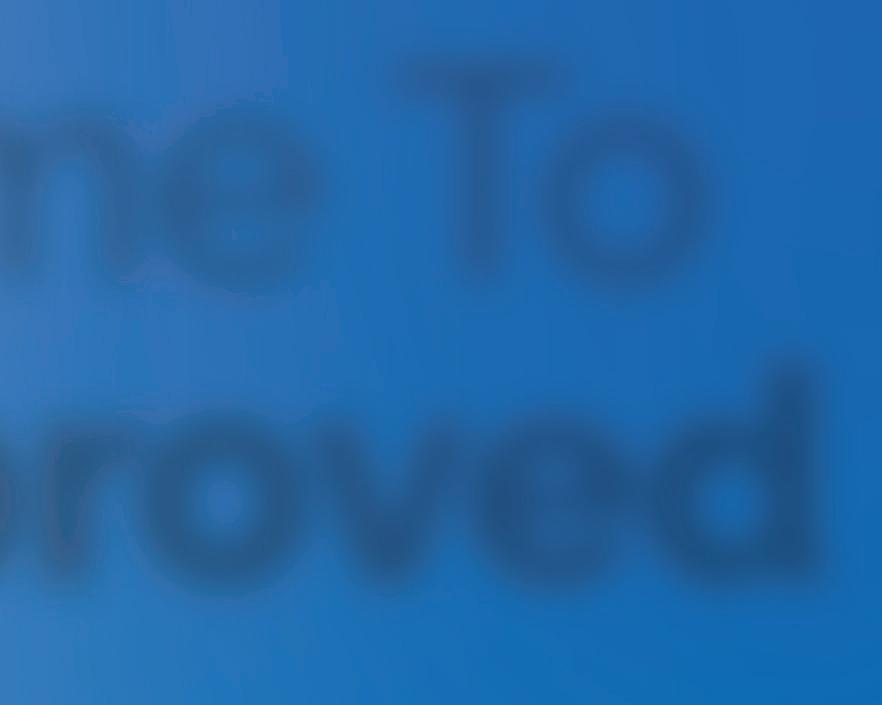







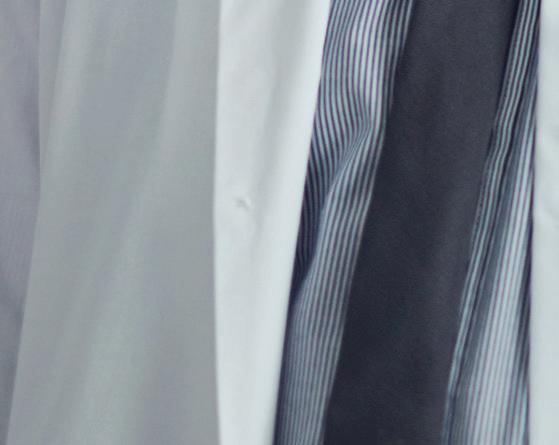









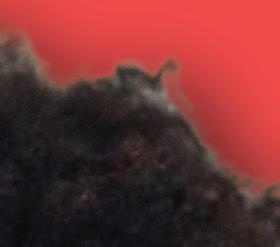


















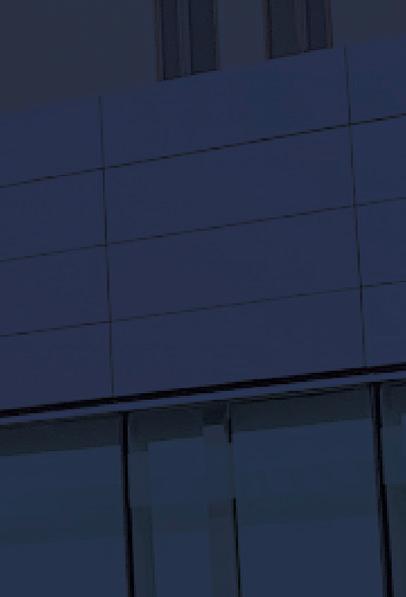



By Amelie Botbol, JNS
Antisemitism has swept over parts of Canada in the wake of Hamas’ Oct. 7 massacre, prompting Jews to consider immigrating to the Jewish state, Israeli Consul-General in Montreal, Paul Hirschson, told JNS.
“Since Oct. 7, we have seen where our friends, colleagues and neighborhoods stand, in terms of their opinions, beliefs and behavior,” said Hirschson. “Some of them stood where we thought they would. Many didn’t and we can’t unsee it.”
Immediately after Oct. 7, the number of hate crimes and incidents skyrocketed in Canada. Montreal police recorded 63 hate crimes against the Jewish community and 41 hate incidents from Oct. 7 to Nov. 14, including the firebombing of a Jewish community center and synagogue in Dollard-des-Ormeaux and a shooting attack on the Yeshiva Gedola elementary school.
In May, police responded to a shooting at a Jewish school in the city’s Côte-des-Neiges–Notre-Dame-de-Grâce borough. In June, a Jewish-owned restaurant in Montreal’s Mile End neighborhood was struck by projectiles, believed to have been fired from an airsoft gun. Last month, Hampstead Mayor Jeremy Levi shared a photo on social media showing a Jewish tombstone at the Kehal Israel cemetery in Montreal that had been desecrated with a swastika formed out of the small stones placed on graves.
Last week, Hirschson noted that an email was sent out threatening to blow up more than 100 Jewish sites across Canada.
With most attacks taking place overnight and very few cases of people being physically attacked, Hirschson said he believes the motive is a desire to terrorize, more than hurt people.
And it’s worked.
“Members of the community feel threatened and insecure,” he said. “Personally, I wish for all Jews to move to Israel, but I don’t want them to do so because of rising antisemitism in Canada. I want them to move because Israel is the greatest place.”

Hirschson described the Quebec government’s attitude toward Canadian Jewry and the State of Israel in positive terms. The municipality of Montreal, however, has not been outspoken enough in its condemnation of antisemitism, partly, he said, due to its obsession with moral equivalence.
“If antisemitism is on the rise, one must condemn it. We cannot say antisemitism and Islamophobia are bad. This is not an intellectual exercise. It’s a reality, people are hurting,” said Hirschson.
“The Arab community here is five times as big, increasingly influential and wealthy. They are having a wonderful time. They have experienced Islamophobia, but that has nothing to do with current events,” he continued.
“The moment you link the two as morally equivalent, you’ve taken it off the streets and turned it into some belief system, some ideology, and it becomes meaningless,” he added.
While Canada has traditionally been and re-
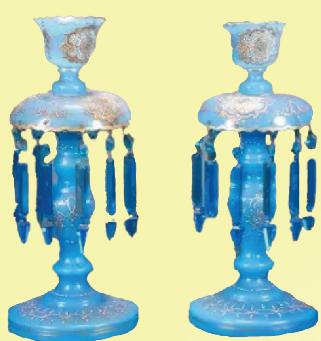









mains a friend of Israel, Hirschson said Jerusalem is a little disappointed with the Canadian government’s approach since Oct. 7, which hasn’t been as steadfast as that of other longtime allies.
Canada is one of the only members of the G7 forum whose prime minister or president has not visited Israel since the Hamas attacks, and was the first of Israel’s friends, together with Australia and New Zealand, to support a ceasefire at the United Nations.
In March, Israeli Foreign Minister Yisrael Katz slammed Canadian Prime Minister Justin Trudeau following Ottawa’s decision to halt arms sales to the Jewish state.
“Real friendship is measured in difficult times. On Oct. 7, Israel was attacked by a terror organization that brutalized, raped, kidnapped and murdered. We were dragged into war,” said Hirschson.
Much of Canada’s foreign policy in 2023 and 2024 has been based on the impact of local com-
munities, including two million Muslims who vote in higher percentages than the Canadian average.
“Montreal city is almost 10% Arab. I think that the municipality and also the government in Canada definitely look internally before making policy decisions,” said Hirschson.
“Israel for the Jews is the most significant manifestation of indigenous restitution in history. After 2,000 years of diaspora, we went home and we stopped being the victim. However, in the Montreal academic sphere and other places, it’s very black or white. If we are no longer the victims, then according to that problematic worldview, we are perpetrators and the Palestinians are the victims,” he noted.
“If we don’t succeed in this conflict, Canada, the United States and Europe will suffer. Maybe not as much as us, because it’s our children who are being slaughtered, but they will suffer as well,” he concluded.
























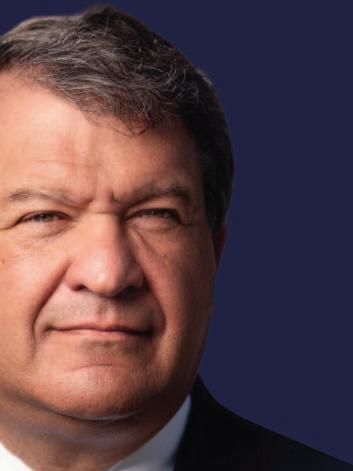




ethel G. hofman

Now that summer’s over, we can let the secret out: If August is Florida’s best-kept secret, the same can be said for September, when it’s equally hot but with fewer tourists since everyone’s back home getting the kids off to school.
Flights are cheaper, attractions not crowded, restaurant reservations accessible, parking spaces available at parks and beaches, and driving isn’t bumper to bumper.
“And the temperature?” I ask a sprightly octogenarian who has spent the last 40 years as a year-round resident of the sunshine state. “Shoosh,” he scoffs. “It’s often a few degrees below Philly or New York. And we always have a breeze.”
And, he adds, “Florida is so laid-back that you don’t need to wear real shoes … ever!”
On a recent weekend visit to Southeast Florida, it certainly was hot during the day — with a burst of thunderstorms that cleared the air — though we could eat fairly comfortably outdoors in the evening. And, of course, everything is air-conditioned, so for those who don’t care for the heat, you can literally run from car to hotel to restaurant to indoor swimming or spas. But the best thing is the accessibility; no fighting the snowbirds or large families in tow.
Even at trendy hotspots, it’s walk on in. No reservations needed. The official theater scene — booming from October through May — hibernates in summer, but jazz groups perform nightly, outdoor concerts abound, and bars and eateries offer live music. The Arts Garage in Delray Beach has open-mic sessions where anyone is welcome to sing or perform stand-up comedy.
You can also escape to the Keys, where it’s almost impossible to relax when it’s jam-packed in the height of fall and winter. But in summer, the barrier island of Key Biscayne offers serene beauty away from Miami’s packed cityscape; and summer rates can’t be beat. For the fishing enthusiast, head down to Islamorada, a worldrenowned sports fishing destination (novice anglers welcome).
I was thrilled just to be able to walk into some of my favorite restaurants without a reservation. Fresh from the waters, well-prepared seafood is available from modest shacks and food trucks to upscale restaurants. Florida’s proximity to Latin America and the Caribbean has influenced its cuisine; a melding of taste-tingling flavors from places like Puerto Rico and the Dominican Republic.
Chefs are evasive when asked for recipes; they’ll rattle off a list of ingredients but no measurements or methods. Here are some of my interpretations, which come pretty close. For the real thing, head south.
hagalil hummus (meat)
Serves 2 to 3
Cook’s Tips: •Whip up a batch of hummus from scratch. It can be made in minutes in the food processor. •Sumac, from sumac berries, is a tangy, slightly sour spice. Substitute lemon zest or a teaspoon of vinegar to replicate sumac’s flavor. •Cumin is a member of the parsley family but has a warm, earthy flavor. Or substitute ground coriander. •Za’atar, known as “brain food” for its medicinal properties. It’s a combination spice blend including marjoram, thyme, sesame seeds, oregano and sumac.
Ingredients:


• 1/2 lb. ground lamb
• 1/2 lb. ground beef
• 1 tsp. bottled chopped garlic
• 1-1/2 tsp. sumac
• 1-1/2 tsp. cumin
• 1-1/2 tsp. za’atar
• 3/4 tsp. freshly ground pepper
• 1/2 tsp. salt
• 1 Tbsp. vegetable oil
• 1 (approximately 17 oz.) tub of traditional hummus
• 1 cup canned chickpeas, drained
• Slivered almonds to garnish (optional)
• Pita bread to serve
• Directions:
In a medium bowl, thoroughly mix the ground lamb and beef with the garlic, spices, pepper and salt.
In a large skillet, heat the vegetable oil over medium-high heat. Add the meat mixture, stirring until no pink remains and the meat is in little nuggets. Set aside to cool.
In a shallow serving dish, spread the hummus, leaving a hollow in the center.
Scatter the chickpeas in the hollow and spoon the meat mixture over. Garnish with almonds (optional) and serve with pita bread.
traditional hummus (Pareve)
Makes about 3 cups
Cook’s Tips: •Well-drained canned chickpeas make this quick and easy. •I add ice cubes for a creamier consistency.
Ingredients:
• 2 (15-oz. cans) chickpeas, well-drained
• 1-1/2 tsp. bottled minced garlic
• 7 Tbsp. freshly squeezed lemon juice
• 6 Tbsp. tahini
• 1 tsp. kosher salt
• 1/4 cup extra-virgin olive oil
• 2 ice cubes
• Chopped parsley or paprika to garnish (optional)
• Pita for serving
Directions:
Place chickpeas in a food processor. Add the garlic, lemon juice, tahini, salt and ice cubes. Process until creamy and smooth, or if you like a slightly coarser consistency, process until desired.
With the motor running, slowly drizzle in the olive oil. Process until well combined. Transfer to a serving dish, swirling with the back of a spoon.
Garnish with parsley or paprika, if using. Serve with pita bread.
avocado tartare (Pareve/Vegetarian/Vegan)
Serves 2 to 3
Cook’s Tips: •Chop red pepper and cucumber coarsely in a food processor. •Recipe may be doubled. •May be prepared, covered tightly

with plastic wrap and chilled 3 to 4 hours ahead of serving time.
Ingredients:
• 1/4 small red bell pepper, cut into chunks
• 1/2 cucumber, peeled and seeds removed, cut into chunks
• 1 cup parsley, loosely packed, and snipped finely with scissors
• 1 green onion, green part only, snipped finely with scissors
• 1 tsp. capers, rinsed
• 1 medium avocado, peeled, seed removed and cut into 1/4-inch dice
Dressing:
• 1 Tbsp. extra-virgin olive oil
• 1 Tbsp. freshly squeezed lemon juice
• 1 tsp. Dijon-style mustard
• 2 to 3 drops hot sauce
Directions:
In a cup, whisk together the dressing ingredients. Set aside. Place the red pepper in the food processor. Chop coarsely. Place in a medium bowl. Repeat

















































































Continued from page 12 with the cucumber. There is no need to wash the processor bowl in between.
Add to the red pepper. Add the parsley, green onion, capers and avocado. Pour the dressing over and stir gently.
Serve with pita bread or crackers.
Serves 6 to 8
Cook’s Tips: •Flatbreads are available in every size and every market, found in the bread aisle. •Kitchen scissors to snip herbs are indispensable. •May use a mixture of cheeses instead of goat cheese, like Parmesan and grated cheddar.
Ingredients:
• 1 8-inch flatbread
• 3 Tbsp. fig jam
• 2 dried figs, thinly sliced
• 1/2 green onion, finely snipped
• 1 cup shredded arugula
• 1/4 cup shredded fresh basil
• 3 oz. goat cheese, chilled
• freshly ground pepper and paprika
Directions:
Preheat oven to 350 degrees. Line a baking sheet with foil and spray with nonstick vegetable spray.
Place the flatbread on top. Spread the jam over the flatbread. Scatter the sliced figs over. Top with the onion, arugula and basil. Crumble the goat cheese over top. Sprinkle with 2 to 3 grinds of pepper and lightly with paprika.
Bake for 15 minutes in a preheated oven until the goat cheese is soft and puffy. Serve warm or at room temperature.
Serves 6 to 8
Cook’s Tips: •Substitute soft challah for bri-

oche. •Shredded carrots from the market. Zap in the microwave for 1 minute to soften.
Ingredients:
• 8 cups cubed brioche
• 1-1/4 cups shredded carrots
• 1 cup canned pineapple tidbits, drained with 1/4 cup juice reserved
• 1/4 cup chopped pecans
• 1/4 cup shredded unsweetened coconut
• 2 cups light cream
• 1 cup dark-brown sugar, tightly packed
• 3 large eggs
• 2 Tbsp. butter, melted
• 2 tsp. cinnamon
• 1/2 to 1 cup melted vanilla ice-cream (optional)
Directions: Spray an 8- or 9-inch square baking dish with nonstick baking spray. Place the brioche, carrots, pineapple, pecans and coconut in the prepared dish. Toss to combine. Set aside. In a medium bowl, whisk together the cream,


brown sugar, eggs, butter and cinnamon. Pour evenly over the brioche mixture, pressing down with a spoon. Cover and refrigerate overnight or for at least 8 hours. Remove from refrigerator. Let stand for 30 minutes at room temperature before baking. Bake in a preheated, 350-degree oven for 50 to 55 minutes or until the center is just beginning to set. If it’s browning too quickly, cover loosely with foil.
Serve warm with melted ice-cream drizzled over top, if using.


Mothers looking for a hospital at which to give birth should consider the quality indicators used by U.S. News & World Report ® to determine institutions deemed High Performing for Maternity care.
Mount Sinai South Nassau is the only South Shore hospital to earn the rating of High Performing based on eight key measures:
• Reduced C-section delivery rates
• Low early elective delivery rates
• Low overall unexpected newborn complication rates
• Increased routine VBAC rates
• Increased exclusive human milk feeding rates
• Low episiotomy rates
• Routine birthing-friendly practices
• Transparency on racial/ethnic disparities
If you want the best birthing experience for you and for your baby, look no further than Mount Sinai South Nassau.
Learn more at southnassau.org/maternity, or call 877-SOUTH-NASSAU.
jewish star torah columnists:
•Rabbi Avi Billet of Anshei Chesed, Boynton Beach, FL, mohel and Five Towns native •Rabbi David Etengoff of Magen David Yeshivah, Brooklyn
•Rabbi Binny Freedman, rosh yeshiva of Orayta, Jerusalem
contributing writers:
•Rabbi Sir Jonathan Sacks zt”l,
former chief rabbi of United Hebrew Congregations of the British Commonwealth
•Rabbi Dr. Tzvi Hersh
Weinreb, OU executive VP emeritus
•Rabbi Raymond Apple, emeritus rabbi, Great Synagogue of Sydney
•Rabbi Yossy Goldman, life rabbi emeritus, Sydenham Shul, Johannesburg and president of the South African Rabbinical Association.
contact our columnists at: Publisher@TheJewishStar.com
Five towns candlelighting: From the White Shul, Far Rockaway, NY
Fri Sept 6 / Elul 3
Shoftim
Candles: 6:59 • Havdalah: 8:07
Fri Sept 13 / Elul 10
Ki Seitzei
Candles: 6:48 • Havdalah: 7:55
Fri Sept 20 / Elul 17
Ki Savo
Candles: 6:36 • Havdalah: 7:43
Fri Sept 27 / Elul 24
Nitzavim-Vayeilech
Candles: 6:24 • Havdalah: 7:31
Wed Oct 2 / Elul 29
Erev Rosh Hashana
Candles: 6:16
Thu Oct 3 / Tishrei 1
First Day Rosh Hashana (Tashlich) Candles: 7:15

In Shoftim, Moses speaks about the great institutions of Judaism: courts, judges, officers, kings, priests, Levites and prophets. In the case of the prophet, Moses says in the name of G-d: I will raise up a prophet for them from among their own people, like yourself: I will put My words in his mouth, and he will speak to them all that I command him. (Deut. 18:18)
The phrase “a prophet … like yourself” cannot be meant literally. In the quality and clarity of his communications with G-d, Moses was unique. He was unique in the miracles he performed. Most importantly, only he was authorized to proclaim Torah — he was Israel’s sole legislator.
The king and Sanhedrin both had powers to make temporary enactments for the sake of social order. Prophets were given the authority to command specific, time-bound acts. But no one could add to or subtract from the 613 commandments given by G-d through Moses.
This, therefore, is how Rambam explains our passage: Why is it said in the Torah: “I will raise up a prophet for them from among their own people, like yourself” (Deut. 18:18)? He will come not to establish a religion, but to command them to keep the words of the Torah, warning the people not to transgress them, as the last among them said: “Remember the Torah of Moses My servant” (Mal. 3:22).
In other words, the prophets who followed Moses, from Elijah to Malachi, were not revolutionaries. They did not intend to create something new but to restore something old. Their task was to recall people to the mission Moses taught them: to stay faithful to G-d, and to create a just and compassionate society.
Eventually, during or after the Second Temple period, most of these institutions ended. There were no kings because Israel had no sovereignty.
There were no priests because it had no Temple. But there were also no prophets. How important was this? And what happened to prophecy? The Talmud gives two radically opposite opinions. The first:
Rabbi Yochanan said: From the day that the Temple was destroyed, prophecy was taken from the prophets and given to fools and children. We can’t be sure what Rabbi Yochanan meant.
The sages saw themselves as heirs to the prophets. But in what sense?
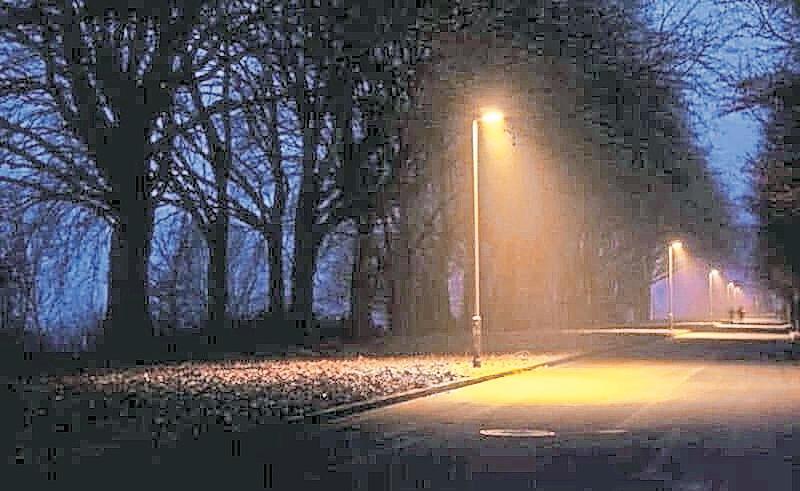
He may have meant that children and fools sometimes see what others don’t (as Hans Christian Anderson illustrated in the famous story of the Emperor’s New Clothes).
He may, though, have meant the opposite, that prophecy deteriorated during the late Second Temple period. There were many false prophets, soothsayers, doomsayers, mystics, announcers of the apocalypse, and messianic movements, all confidently predicting the end of history and the birth of a new order of things. There were religious sectarians.
There were Essenes expecting the arrival of the Teacher of Righteousness. There were rebels against Rome who believed that their military hero would bring freedom, even the messianic age. It was a fevered, destructive time, and Rabbi Yochanan may have wanted to discredit, as far as possible, any dependence on supposedly divine certainty about the future. Prophecy is the chattering of children or the rambling of fools.
However the Talmud also cites a quite different opinion:
Rabbi Avdimi from Haifa says: From the day that the Temple was destroyed prophecy was taken from the prophets and given to the sages. … Ameimar said: And a Sage is greater than a prophet, as it is stated: “A prophet has a heart of wisdom” (Ps. 90:12). Who is compared to whom? You must say that the lesser is compared to the greater. (Since a prophet must have a heart of wisdom, the Sage, who is wisdom personified, must be greater still).
This is seriously interesting. The early judges in Israel were Kohanim. When Moses blessed the people at the end of his life he said of the tribe of Levi, “They shall teach Your laws to Jacob and Your instructions to Israel” (Deut. 33:10). When Ezra taught Torah to the Israelites, he positioned Levites among the people to explain what was being said. All this suggests that when the sages — teachers and masters of Jewish law —
traced their intellectual-spiritual lineage, they should have done so by seeing themselves as heirs of the Kohanim and Levi’im. But they did not do so.
We see this from the famous Mishnah that opens Pirkei Avot: Moses received the Torah at Sinai and handed it onto Joshua, Joshua to the elders, and the elders to the prophets, and the prophets to the Men of the Great Assembly.
The sages saw themselves as heirs to the prophets. But in what sense? And how did they come to see themselves not just as heirs to, but as greater than the prophets. What is more, the proof text they cite means nothing of the kind.
The verse in Psalm 90 says, “Teach us to number our days, that we may gain a heart of wisdom.” The Talmud is playing on the fact that two quite different words sound alike: נבא (we may gain) and נבא (a prophet). In other words, only by suspending our critical faculties is the proof-text a proof.
Something very strange is happening here.
The sages, who valued humility, who knew that prophecy had come to an end in the days of Haggai, Zechariah and Malachi five centuries before the destruction of the Second Temple, who believed that the most one could hear from heaven was a bat kol, a distant echo, are here saying that not only are they prophets, but they are superior to prophets.
All this to teach us that the sages took the ideals of the prophets and turned them into practical programmes. Here is one example. Remonstrating with the people, administering rebuke, was fundamental to the prophetic task. This is how Ezekiel understood the task:
G-d said: “Son of man, I am sending you to the Israelites, to a rebellious nation that has rebelled against Me … Say to them, ‘This is what the Sovereign L-rd says.’ And whether they listen or fail to listen — for they are a rebellious people — they will
know that a prophet has been among them. (Ez. 2:3-5)
Ezekiel must take a public stand. Once he has done that, he has fulfilled his duty. The people will have been warned, and if they fail to listen, it will be their fault.
The sages had a completely different approach. First, they understood the task of remonstrating as belonging to everyone, not just prophets. That is how they understood the verse, “You shall surely rebuke your neighbor so you will not share in his guilt” (Lev. 19:17). Second, they held that it should be done not once but up to a hundred times if necessary. In fact you should keep reprimanding a wrongdoer until they hit you or curse you or scold you.
All of this, though, applies only if there is a reasonable chance of making the situation better. If not, then we apply the rule: “Just as it is a mitzvah to say something that will be heeded, so it is a mitzvah not to say something that will not be heeded.”
Note the difference between the two approaches. The prophet takes a heroic stand but does not take responsibility for whether the people listen or not. The rabbis do not take a heroic stand. In fact, they democratize the responsibility for rebuke so that it applies to everyone. But they are ultra-sensitive to whether it is effective or not.
If there is a chance of changing someone for the better, then you must try a hundred times, but if there is no chance at all, better be silent. This is not only a wise approach; it is a highly effective one.
Now consider peace. No finer visions of a world at peace have ever been given than by Israel’s prophets. This is just one:
The wolf will live with the lamb, the leopard will lie down with the goat, the calf and the lion and the yearling together; and a little child will lead them. … They will neither harm nor destroy on all My holy mountain, for the earth will be filled with the knowledge of the L-rd as the waters cover the sea.
(Isaiah 11:6-9)
Now consider rabbinic teachings:
For the sake of peace, the poor of the heathens should not be prevented from gathering gleanings, forgotten sheaves, and corners of the field. … Our masters taught: for the sake of peace, the poor of the heathens should be supported as we support the poor of Israel, the sick of the heathens should be visited as we visit the sick of Israel, and the dead of the heathens should be buried as we bury the dead of Israel.
Once again, the difference is glaring. What for the prophets was a dazzling vision of a distant future was, for the sages, a practical program of good community relations, a way of sustaining peaceful coexistence between the Jewish community and its Gentile neighbors. It was imaginative, gracious and workable.
There are many other examples.
The sages achieved something extraordinary. Throughout the biblical era, the Israelites were
See Sacks on page 22
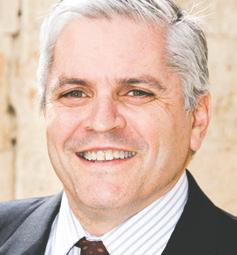
During the Holocaust, the Klausenberger Rebbe, Rabbi Yekutiel Halberstam, passed through the gates of hell many times. In the Warsaw Ghetto, the work camps and death marches and the final unspeakable horror, Auschwitz, the rebbe lost his wife and their 11 children in less than a year, yet never sat shiva, refusing to take the time to mourn for his own children while so many thousands were being lost daily.
Throughout his harrowing experiences, he vowed that if he survived, he would build a monument to chesed (loving-kindness) as his response to the inhumanity he witnessed. Today, Laniado Hospital in Netanya is that monument. It took the rebbe 15 years to raise the funds to build Laniado Hospital. He was determined to show the world the light of Judaism’s model for human behavior after so much darkness. At the hospital’s dedication, asked why a rabbi had chosen to build a hospital instead of a Torah institution, his response was that every hospital is and should be a Torah institution.
Determined to imbue the hospital staff with the Torah’s attitude towards healing, in his dedication speech he explained that the most important factor in healing the sick was a “warm Jewish heart.”
One Rosh Hashana, a woman began to hemorrhage during childbirth. She desperately needed a massive transfusion of an extremely rare blood type. An order went out that every student in the adjacent yeshiva should immediately rush to the hospital to have their blood type tested. Prayers were stopped in the middle of Mussaf on Rosh Hashana, and one of the yeshiva students,

himself a nurse, labeled the vials of blood to assist the overwhelmed skeleton nursing staff.
The woman’s sister, also a nurse, wondered if her sister would be alive today in any other hospital.
“When you come to a place of darkness,” the rebbe explained, “you do not chase away the darkness with a broom — you light a candle.”
What does it mean to build a monument?
This week’s portion, Shoftim, offers an interesting point: “Ve’lo’ takim lecha’ matzeva asher saneh’ Hashem Elokecha (And you shall not erect for yourselves a monument which Hashem, your G-d, hates).” Vayikra 16:22
Apparently, it is forbidden to erect a matzeva (a monument); for various reasons we can assume that such a monument is forbidden as form of idolatry.
Rashi explains that we are referring to an altar made of one single stone, and that such an altar is unacceptable even if dedicated to offering sacrifices to Hashem, because it was a Canaanite practice, abhorrent to G-d.
What was so terrible about such an altar, or monument, that made it hateful to G-d?
It seems there is a fundamental difference between a mizbeach (altar), which was a mitzvah to build, and a matzevah (which was abhorrent because it was the practice of the
The righteous are like the trees beside a stream

Ilove metaphors. An apt metaphor can help stimulate boundless creativity and can lead to a deeper and richer understanding of the concept being studied.
Take, for example, the metaphor of a tree as representing a human being. We find this metaphor in this week’s Torah portion, Shoftim, in the following verse:
“When you besiege a city for many days to wage war against it, to seize it; do not destroy its tree, by swinging an ax against it; for from it you will eat, and you shall not cut it down; because man is a tree of the field, to come against you in a siege.” (Deuteronomy 20:19)
I am aware that there are alternative translations of the phrase under consideration, and that some render it as a question, “Is a tree of the field like a man?” But the literal meaning of the phrase is declarative. Man is like a tree of the field. How? Let us count the ways.
For starters, King David himself, in the very
first chapter of Psalms, compares the righteous person to a tree. “He is like a tree planted beside streams of water, which yields its fruit in season, whose foliage never fades, and whatever he does prospers.” Of all the metaphors available to the psalmist to paint the picture of the good man, the tree is the one he finds most fitting.
The rabbis also use the metaphor of the tree to capture the essence of one aspect of humanity.
Thus, Rabbi Elazar ben Azariah would say, “He whose wisdom exceeds his deeds, to what can he be compared? To a tree whose branches are many but whose roots are few, so that any wind can come and uproot it and turn it over on its face. … But he whose deeds exceed his wisdom, to what can he be compared? To a tree whose branches are few but whose roots are many, so that even if all the winds of the worlds beset him, they cannot move him from his place.” (Avot 3:22)
The righteous person is like a tree beside a stream. The ethical man of action who puts his wisdom into practice has deep roots which give him confidence and security.
There are so many other ways in which we resemble the tree. The tree regenerates, and the wind carries its seeds to great distances. So too, mankind is perpetuated over the generations, and sometimes our descendants take root in corners of
the earth that are far removed from us.
When I close my eyes and try to imagine the tree, two different images compete for my mind’s attention. One is the tree standing alone in the field, with long and drooping overhanging branches, providing shade for those who sit under it. So too, I can imagine human beings in my own life and in the history of humanity who stood apart and were misunderstood, yet provided physical or spiritual shelter to so many others.
The other image I have is of one tree, not alone, but together with many others constitut-
Just as the twig is bent, the tree’s inclin’d.
Trees left to their own devices grow wildly. Proper cultivation can direct their growth positively and productively. So too, humans benefit from proper “bending,” discipline and training.
And then there is the sad, but ultimate, connection between the tree and the human being. Trees wither, and trees die. They are subject to the forces of nature — fire, wind, deterioration and decay. Yes, we know of trees that have endured for centuries, but even those lengthy life spans eventually come to an end.
ing an impenetrable and mysterious forest. And so too, human beings band together into social groups which contain their own idiosyncrasies, which seem impenetrable to the outsider.
There is a lesson in the metaphor of the tree for that most important human process: education. This lesson is so well-expressed in the lines of the poet, Alexander Pope:
‘Tis education forms the common mind:
I would like to end this brief contemplation of the many analogies between mankind and the trees with a passage from the ancient Greek poet, Aristophanes, which is so reminiscent of more than one passage in our High Holiday liturgy: Mankind, fleet of life, like tree leaves, weak creatures of clay, unsubstantial as shadows, wingless, ephemeral, wretched, mortal and dreamlike.
But there is a happier connection between people and trees, and that is through the Torah, which is itself compared to a tree, the tree of life, “eitz chaim hi.”
Indeed, “Man is like the tree of the field,” withering or able to thrive, depending on one’s own life circumstances.
Moshe says in Shoftim: Follow a leader like me

The shofar sounding that accompanies the start of Elul reminds us that Rosh Hashana will soon be upon us. The commentary of Rabbeinu Bachya on the coming parshas has found an important place in my own Elul and teshuvah-focused experience. This week we will look at one of his important teachings. In the context of reminding the Israelites not to follow the influence of the necromancers of the surrounding nations, a seemingly uncharacteristic comment escapes Moshe’s lips: “A prophet from among you, from your brethren, such as myself, will be whom Hashem your G-d establishes for you. Listen to him [the prophet].” In Hebrew, the “comment” is all of one word, “kamoni,” or “such as myself.”
Many commentaries suggest that this comment refers to the previous word, me’achekha
(from your brethren), in which Moshe says that any prophet you will have will be from the Israelite nation and he will teach you the ways of G-d and will not steer you in the direction of idolatry or the occult — kamoni, meaning “along the lines as I have properly led you.”
Rabbeinu Bachya points out, for example, that one might think achekha includes a prophet from the children of Eisav or Ishmael. This is another reason why Moshe is clear to say kamoni, only from a direct Israelite lineage.
All these disclaimers are nice, but the fact remains that if Moshe needed to bring an example, he could have just as easily used his brother’s name, or he could have pointed at Yehoshua as he did in Bamidbar 27 and Devarim 1 and 3, saying, “A prophet … such as Yehoshua who will be taking over when I am gone.” Why did he say what seems like a hubris statement — “You’ll want a prophet like me”? After all, Moshe was the humblest of people (Bamidbar 12:3), so certainly this comment is out of character!
The Baal Haturim notices that kamoni has the same numerical value as anav (humble) (both equal 126). Moshe does not want to say, “I am
humble,” but he does want to suggest, in code, what is a good quality of a leader.
Humility is not defined as thinking you are a nobody. Humility means knowing who you are, and not making a big deal about it. It means understanding your role, as you understand that you are a nobody in comparison to G-d. Most importantly, a humble leader knows that circumstances have brought him or her to a position that commands respect or is an inspiration to others, but it’s the position which is respected before the person filling it earns the respect based on his deeds.
Rabbeinu Bachya explains Moshe’s wordchoice as follows, “The prophet should be like me, meaning he should follow my precedent. He should not add nor subtract or uproot a single mitzvah from the Torah, unless he is an established prophet and the specific circumstance warrants it [for instance, Elijah bringing sacrifices on Mount Carmel during the time of the Temple].
“Ours is not a religion in which we believe in Moshe is prophet and leader on account of the signs and wonders he did. It is all on account of our having heard G-d’s word directly from Him
[at Sinai], as did Moshe. We know it, we were witnesses to it, as it says (Shmot 19:9), ‘Behold I am coming to you in a thick cloud so that the nation will hear when I speak with you, and they will believe in you [as My chosen leader] forever’.”
Rabbeinu Bachya quotes Maimonides (Foundations of the Torah Chapter 8) as the source for his position, and Maimonides continues the point saying that every sign Moshe did was to get the people to follow him to Sinai. But every sign also gets people thinking, “Maybe this guy is a magician.” The Sinai experience changed all of that forever.
When Moshe says, “G-d will appoint a prophet kamoni,” he is saying, “It will be so clear in your eyes who is a true prophet, because he stands for Torah, is guided by the Torah, and doesn’t change the Torah.” He needs to use himself, and not Aharon or Yehoshua, as an example, because it was Moshe who was on Sinai. This is not arrogance. This is knowing and understanding what his role was, is and remains forever. Judaism has always been a religion in which the Written and Oral Torah was sacrosanct. In
Published weekly except during certain religious and civil holidays by The Jewish Star LLC New York City office: 5676 Riverdale Ave Suite 311, Bronx NY 10471 • LI office: 2 Endo Blvd, Garden City NY 11530
how to reach The Jewish Star — Write: Editor@TheJewishStar.com. Call: 516-622-7461 ext 291
Editor & Publisher: Ed Weintrob
516-622-7461 ext 291
Jewish Star Associate: Nechama Bluth, 516-622-7461 ext 241.
Content: The Publisher endeavors to ensure that our content is within the bounds of normative halachah and hashkafah. Anyone who feels anything we publish may be inappropriate in this regard is urged to bring the item in question to the attention of the Publisher. Advertising is accepted at the sole discretion of the Publisher and should conform to standards appropriate for distribution in an Orthodox community.
Send us your news! Editor@TheJewishStar.com
Advertising: Publisher@TheJewishStar.com
Kashrut: The Jewish Star is not responsible for the kashrut of any product or establishment featured in its pages. If you have questions regarding any establishment or product, including its supervision, please consult your rabbi for guidance.
Submissions: All submissions become the property of The Jewish Star and may be edited and used by the Publisher, its licensees and affiliates, in print, on the web and/or in any media that now exists or will exist in the future in any form, including derivative works, throughout the world in perpetuity, without additional
authorization or compensation. The individual or entity submitting material affirms that it holds the copyright or otherwise has the right to authorize its use in accordance with The Jewish Star’s terms for submissions.
Opinions: Views expressed by columnists and other writers do not necessarily reflect the position of the Publisher or of The Jewish Star LLC.
Distribution: The Jewish Star is available free in kosher food establishments, stores, synagogues, and curb-side newsboxes on Long Island, in New York City and elsewhere. To request free delivery to your location, write Publisher@TheJewishStar.com.
Copyright: All content is copyright and may not be republished or otherwise reproduced without written permission by The Jewish Star LLC; to do so without permission is against the law and halacha. For content reproduction write to Publisher@TheJewishStar.com.
The Jewish Star subscribes to the JNS news service. It, or its contributors, own the copyrights on material attributed to them. The length and content of JNS material and all other submitted material may be edited by The Jewish Star.
This newspaper contains words of Torah; please dispose of properly.
mElANiE PHilliPS British journalist

The outspoken Chief Rabbi of South Africa, Dr. Warren Goldstein, has once again given voice to crucial truths that others have shamefully ignored.
He accused both Pope Francis and the Archbishop of Canterbury, Justin Welby, of being indifferent to the murder of black Christians in Africa and the terrorism threat in Europe while being “outright hostile” to Israel’s attempts to battle jihadi forces led by Iran.
“The world is locked in a civilizational battle of values, threatened by terrorism and violent jihad,” said Goldstein. “At a time when Europe’s very future hangs in the balance, its two most senior Christian leaders have abandoned their most sacred duty to protect and defend the values of the Bible. Their cowardice and lack of moral clarity threaten the free world.”
Goldstein’s blistering accusations were on the mark.
Christians in Africa have been subjected to barbaric slaughter and persecution by Islamists for decades. Two years ago, Open Doors, an organization that supports persecuted Christians, observed: “In truth, there are very few Muslim countries — or countries with large Muslim populations — where Christians can avoid intimidation, harassment or violence.”
In January 2024, a report for Genocide Watch confirmed that, since 2000, 62,000 Christians in Nigeria have been murdered by Islamist groups in an ongoing attempt to exterminate Christianity. In addition, more than 32,000 moderate black Nigerian Muslims and non-faith individuals have been massacred.
According to a report in 2020 by the United States Commission on International Religious Freedom, Christians in Myanmar, China, Eritrea, India, Iran, Nigeria, North Korea, Pakistan, Russia, Saudi Arabia, Syria and Vietnam
The core of Christian anti-Zionism is a belief that Jews represent a permanent challenge to the Christian faith.

are being persecuted.
These facts were reported in June by Peter Baum for the Daily Blitz. Yet the mainstream media all but ignore these atrocities. There are no marches in Western cities to accuse these countries of facilitating crimes against humanity. There are no NGO-inspired petitions to the International Court of Justice (ICJ) to declare these countries and groups guilty of genocide. Instead, the media and Western elites demonize Israel as the pariah of the world for defending itself against these genocidal Islamists. This unique and egregious double standard is the hallmark of classic antisemitism.
The attitude of the church leaders is even more astonishing. The hundreds of thousands of victims of this persecution are their flock. The goal of this onslaught is the wholesale destruction of the faith they lead.
Yet from Welby and the Pope have emerged little more than occasional expressions of measured concern. And even then, they usually refuse to call out what’s happening by its proper name — the Islamist war to eradicate Christianity and destroy the West.
The 10-month war against Israel by Iran and its proxies following the Oct. 7 pogrom is a crucial front in that onslaught against Western civilization. Yet as Goldstein said, the Pope and Welby have stood passively by while African Christians are “butchered by jihadi groups with direct ties to Israel’s enemies in Gaza and the West Bank.”
The jihadi ideology, he said, was also a clear
and present danger to Europe. As a result of openborder policies, immigrants poured into the U.K. and across Europe, many of them “brandishing a violent jihadi ideology deeply hostile to Christianity, liberal democracy and western values.”
The result has been surging antisemitism leaving Diaspora Jews living in fear. Yet on the ideology fueling this civilizational onslaught, Welby and the Pope have been silent. Instead, they have recycled the Islamists’ propaganda that demonizes and delegitimizes Israel with lies.
Last December, the Pope described Israel’s Gaza war of self-defense against genocide as “terrorism.”
Last month, Welby endorsed the advisory opinion of the ICJ that Israel’s occupation of the “Palestinian territories” was illegal. The court’s opinion, which owed everything to politics and virtually nothing to law, was based entirely on lies and distortions.
Yet Welby commented, with a passion that’s wholly lacking when he talks about the slaughter of Christians in Africa, that Israel was guilty of “systematic discrimination”; that it was “denying the Palestinian people dignity, freedom and hope”; and that “ending the occupation is a legal and moral necessity.”
Every part of that was a falsehood. Israel is not in illegal occupation of the disputed “West Bank” areas of Judea and Samaria. On the contrary, the Jews are the only people with a legal right many times over — from the terms of the 1922 Palestine Mandate and then through inter-
national laws of self-defense and those permitting the retention of territory that is still used for belligerent purposes — to what is now Israel, the “West Bank” and Gaza.
So, why are the Pope and the archbishop given to such unholy perversity? The reason is partly psychological, partly political but mostly theological.
•First, there’s the fear of antagonizing the Muslim world and, as a result, bringing about yet more persecution of Christians.
•Second, there’s internalized self-flagellation corresponding to Western liberals scourging themselves for “white privilege.” Back in 2020, Welby said he was ashamed of the Anglican attitude towards black people and declared that the church was “deeply, institutionally racist.” The Pope, an acolyte of left-wing “liberation theology,” has a similarly anti-West mindset.
The deeper reason, however, is theological. That was illuminated by the sharpest challenge of all that Goldstein hurled at the Archbishop of Canterbury.
By supporting the ICJ ruling that the “West Bank” and eastern Jerusalem are “occupied territory” to which the Jewish state has no rightful claim, said Goldstein, Welby was effectively rejecting the Bible — which, in addition to theology, was a book of historical fact.
This was because, said Goldstein, the boundaries of Israel, which are delineated repeatedly throughout the Torah as the word of G-d, include the ancient lands of Judea and Samaria that, along with Jerusalem, also figure in other books of the Bible as the historic kingdom of Israel. Goldstein’s main challenge, however, was not political or legal but religious. In the Bible, G-d’s promise to the Jews of the entire Land of Israel is an “eternal oath,” an “unconditional covenant.” For a religious believer, this must supersede everything else without limit of time.
Yet Welby’s endorsement of the ICJ ruling that Israel was in illegal occupation suggested he did not regard the word of G-d as eternally binding. Was Welby therefore truly a religious believer, the rabbi was asking, or did he regard G-d’s promise as merely a myth?
That slices straight to the heart of Welby’s unholy attitude — the profound and enduring problem that certain Christians have with Judaism itself.
Christians who are faithful to the Hebrew Scriptures love the Jews and support Israel, appreciating that Christianity derives from Judaism. Other Christians, who don’t have such respect for Hebrew Scripture, have no such love for the Jews.
To such Christians, the Jews’ implacable refusal to accept the divinity of Jesus represents an
See Phillips on page 22
GLOBAL FOCUS
BEN COHEN

In an interview with the Jerusalem Post on Aug. 28, Yonathan Arfi, head of the French Jewish umbrella body Crif, complained that most of his fellow citizens have an understanding of antisemitism that is rooted in the memory of the Second World War. The indelible association of Nazism with Jew-hatred, Arfi argued, prevents today’s generations from perceiving antisemitism as a live and current threat to the Jewish communities in their midst.
Given that Arfi represents a community that has endured a 200% increase in antisemitic outrages since Jan. 1, his views on this matter deserve to be taken seriously. And on one level, he is right.
Antisemitic skinheads are still out there, but right now, they don’t represent the greatest threat to Jewish communities. Nonetheless, because they are seen as the true inheritors of the ideology behind the Holocaust, casual observers are blinded to the reality that today’s antisemites aren’t overly concerned with shaving their heads; instead of displaying swastikas and chanting “Sieg Heil,” they’re wearing keffiyehs and chanting “From the River to the Sea.”
As a result of these optics, the pro-Hamas
You have no right to live among us as Zionists; you have no right to live among us; you have no right to live.
solidarity movement that has mushroomed in Western countries since the Oct. 7 atrocities is not, in the eyes of many, targeting Jews per se, but rather ideas and symbols — Zionism, the State of Israel — that can be denounced in the language of anti-colonialism, and not for their connections to Judaism.
If there is a logic here, it might perhaps be explained along these lines: Just as opposing the Vietnam War in the 1970s didn’t necessarily mean opposition to the existence of America and Americans, so opposing Israel’s defensive war in Gaza in the 2020s doesn’t mean that you’re an antisemite of the Nazi eliminationist variety. This view is bolstered by the fact that the pro-Hamas movement presents itself as a rainbow coalition of different ethnicities, religions and lifestyles that couches its rhetoric within general appeals to equality and human rights.
Because of that perception, I think it’s a mistake to focus this debate solely on the matter of presentation.
The fact remains that we are dealing with an upsurge of antisemitism unprecedented in scale and venom since the Holocaust. And much of what we are witnessing echoes the Nazi period, particularly before the implementation of the mass extermination policy at the turn of the 1940s. Indeed, these echoes are a big part of the reason why there is so much ominous thinking among Jewish communities about where all this is heading.
Of course, there are significant differences between then and now, the most obvious being that during the Nazi era, antisemitism was a state-driven policy, whereas today it’s a civil society phenomenon in Western countries. Still, there are two overlaps that are worth pointing out.
•Firstly, while Western governments aren’t actively discriminating against their Jewish populations, many of them are feeding antisemitic sentiments.

This is certainly true of those countries in the European Union, such as Spain and the Republic of Ireland, which have pushed for unilateral recognition of a Palestinian state and advocated for sanctions against members of the current Israeli government. These politicians have essentially blessed the notion that Israel is a rogue state committing war crimes and therefore deserving of anger — anger that all too often gets directed at Jewish communities.
As Arfi pointed out, “We all live with the idea that some people consider Jews to be legitimate targets for a battle happening 4,000 kilometers away.”
•Secondly, many of the tactics and meth-
ods supported by the Hamas acolytes mirror the anti-Jewish measures introduced by the Nazi regime. A particularly shocking example emerged last week when the ultra-left New Communist Party in Italy published a blacklist of institutions and individuals who “support or promote the Zionist state in Italy.”
In essence, this was an electronic version of the Nazi boycott campaign of Jewish-owned stores and businesses in Germany during the 1930s that helped give rise to the Holocaust a few years later.
In tandem with that is the rewriting of Jewish history and the caricaturing of Jewish theology. Social-media platforms like X and
From Israel

We love living in Israel’s north. It is an area of beautiful rolling hills, lush greenery, open areas filled with historical sites, wineries and sweet little towns. The air is dry, the water can be drunk from the tap and life is not as sophisticated or fast-paced as it is in the center.
The north is beloved by most Israelis because they understand that it speaks to a simpler time and is an area that has always been central to the Jewish people, both in antiquity and in pre-state Mandatory Palestine.
Sadly, that seems to be a case of “that was then and this is now.” Now, the north is an area under constant attack from Hezbollah rockets and drones.
One sees fires smoldering or areas charred by them, incessant jets overhead and streaks of rockets being intercepted, while citizens flee to the nearest shelter. This has become a day-today reality.
Life has taken on a surreal quality for the many who have chosen to hold their ground and continue their lives as normally as possible. But a great many have chosen otherwise.
The land of Josef Trumpeldor has effectively been ceded to the enemy.

Shockingly, but hardly surprisingly, 60,000 to 80,000 and maybe even 100,000 citizens of the north have decided that living there is just too fraught. They cannot justify putting their families in harm’s way, not knowing how intense the next attack will be and whether the shrapnel or the rocket itself will be the cause of disaster.
Their departure is a grave stain on the sovereign integrity of the State of Israel. The passive acceptance of the current situation sends negative messages to our citizens and signals both weakness and opportunity to our enemies, most particularly Hezbollah.
One senses that Hezbollah has concluded that Israel’s willingness to engage in a seemingly endless tit-for-tat playground shoving match means that Hezbollah is in control of both the pace and intensity of the confrontation.
Our recent preemptive attack, satisfying on one level, ultimately demonstrated the reality that Hezbollah is calling the shots. What we were able to accomplish, admirably for sure, was the elimination of the imminent threat that our intelligence had revealed.
But did we try, under cover of the need to be
preemptive, to destroy other Hezbollah capabilities? Clearly not. The north of Lebanon was not touched.
See Cohen on page 22 DOUGLAS ALTABEF
So, in fencing parlance, we parried but did not thrust. By not doing so, we have submitted to the American vision of fighting defensively but not offensively. We have not been allowed, nor allowed ourselves, to win.
I am not privy to the strategizing of our political, military and intelligence leadership. I do not have confidential statistics about our ground troops’ availability, our near-term armament capabilities and the various permutations and implications of one strategic approach or another.
What I do see, however, is a real-time and intensifying reality for residents of the north. The clock keeps ticking but the only certainty that can be readily ascertained is that we will have a very hard time bringing our northern residents back.
Not only they but others, potential future residents, will also stay away if they believe that to live in the north would be to live under the proverbial sword of Damocles.
What a slap in the face of the self-conception of the Zionist vision this represents. The land of Josef Trumpeldor has effectively been ceded to the enemy. The buffer zone of southern Lebanon has been replaced by the zone of far-north Israel. Unless and until we can create the requisite degree of security for residents, we cannot say that the north is Israel’s. It is a no-man’s land, to the great delight of Hezbollah, that only validates the effectiveness of a drip-drip war of attrition.
There must be ways to meet the dual goals of restoring the viability of the north while not ramping up to a wider war that our leaders are not yet (if ever) prepared to undertake.
For the sake of the Zionist future, let’s implore them to act. Save our north!
The Jewish Star

Once again, I had the privilege of writing and producing a newsletter for Camp Simcha Special. Now I can share some information about what this camp is really about.
Camp Simcha and Camp Simcha Special are the biggest projects of Chai Lifeline, an organization that supports families with a child (or in some cases more than one child) who is sick with a chronic illness or cancer. Close to 880 children go to camp in Sullivan County or have the camp experience by attending Camp Simcha Without Borders.
The theme for this summer was “Let the Games Begin.” Each day when we played another game — including Candyland, Codenames, Monopoly, Battleship, Twisted Kichels, and Ticket to Ride — life-size sets and decorations were built in the camp dining room.
This year, the girls performed the play “Charlie & the Chocolate Factory,” giving it their all and putting huge smiles on everyone’s face.
As for the newsletter, last year one of the counselors told me about a camper who wouldn’t stick with reading or listing to something that didn’t interest her, but that “something caught her eye about the newsletter. She got to see the pictures and graphics. Once she was listening to me read it to her she wanted to hear more. She made me read her the entire thing and she loved it!”
This year, a counselor recounted that her
Knowing that the campers enjoyed the newsletter made all the difference.

“camper was sitting at a table flipping through the newsletter and couldn’t stop reading and looking at all of the graphics, she was so excited to be reading it and couldn’t put it down. She wanted to see more and she did when the next newsletter came out. She was even more excited to see the second, as it recapped all of her favorite days in camp.”
I was so moved by these stories that I would stay up late at night or get up early in the morning, putting the newsletter together, making sure
I got everything done. From writing, the correct details and information, proofreading, editing, pictures, formatting and printing. It was very time-consuming but all worth it. It’s the little things that really make an impact on the campers. While my newsletter was one aspect of camp and it was small, knowing that the campers really enjoyed it made all the difference.
There’s a lot that goes on in camp, from the meals to all of the activities. The days are long (and when I say long, I mean re-
ally long) but the weeks are so very short. What a regular, standard sleep away camp does in a month, Camp Simcha and Camp Simcha Special do in about a week.
As a staff member I know (and not only me but everyone around me) that I am doing my job for the campers. Everything we do is to better the lives of the campers each day we are in camp, not just in camp but outside camp as well. There are a few extra special activities that
See Bluth on page 22
Counter Extremism Project

Ijoined hundreds of Argentinians and delegates from around the world outside the Asociación Mutual Israelita Argentina (AMIA) in Buenos Aires last month to commemorate the 30th anniversary of the bombing on July 18, 1994, which killed 85 people and wounded 300 others.
As we stood in front of the rebuilt AMIA building — itself a symbol of Argentinian resilience and rejection of terrorism — we listened solemnly as the names of the 85 victims were read from the stage as their images flashed on a giant monitor facing the crowd, which included Jews and nonJews. People had come from around Argentinia and the world to stand there and shout Presente! (“present”) as Argentina marked the tragedy and called for justice not just for the Jewish community of Buenos Aires but for all of Argentina.
Though investigations concluded that Hezbollah, under the direction of Iran, was responsible for this horrific act of violence — as well as the attack two years earlier, on March 17, 1992, at Israel’s embassy in Buenos Aires, which killed 29 and wounded 242 — no one has been held accountable or brought to justice. While Argentinians continue to call for justice, on the other side of the world Hezbollah continues to sow terror and death from its base in Southern Lebanon as it continues its attacks on Israel.
Before the attack in Argentina, in April 1983, Hezbollah bombed the US Embassy in Beirut, killing 63 people, followed by an attack on US Marine barracks later that same year,

which resulted in 241 deaths.
For four decades, Hezbollah has wrought destruction around the world. The international community has loudly condemned the Iranian proxy and demanded that it cease its campaign of death but has failed to significantly impact Hezbollah’s behavior, except to embolden the terror group. Since Oct. 8, its operatives have launched 8,000 rockets and missiles towards Israel, displacing tens of thousands of people while Hezbollah’s leadership continues to threaten further missile strikes into central Israel.
At the end of August, the UN Security Council renewed the mandate of the UN Interim Force in Lebanon (UNIFIL), the peacekeepers tasked since 1978 with assisting the Lebanese Armed Forces in maintaining calm along the Lebanon-Israel border. UNIFIL has been present in Lebanon for 46 years. And in that time, it has proven to be grossly ineffective, even a hindrance, when it comes to delivering peace.
In July 2006, Hezbollah launched a cross-border attack on Israel, sparking a month-long war that ended with UN Security Council Resolution
1701. In addition to a conclusion of hostilities, the resolution called for strengthening UNIFIL to facilitate the entry of Lebanese forces into the Hezbollah-controlled area to maintain a demilitarized zone between the Blue Line (the border between Israel and Lebanon) and the Litani River, effectively disarming Hezbollah within its stronghold. At least, that was the idea.
UNIFIL has remained impotent, playing the role of spectator as Hezbollah not only rearmed after the 2006 war but spread into Syria during that country’s civil war in 2011. In its 46-year existence, UNIFIL has witnessed Hezbollah’s continued violence and aggression with the group being responsible for numerous deadly attacks. Its hostility continued with a cross-border assault on July 12, 2006, which killed eight Israeli soldiers, and led to the capture and eventual deaths of two others. The subsequent 34-day war saw Hezbollah, armed by Iran, fire thousands of rockets into Israel, resulting in the deaths of 49 Israeli civilians and 121 soldiers. Then, on July 18, 2012, exactly 18 years after the AMIA bombing, Hezbollah orchestrated a suicide bombing on an Israeli tour bus in Burgas, Bulgaria, claiming six lives.
Since the passage of Resolution 1701 in 2006, Hezbollah has spread into Syria, taking up arms on behalf of dictator Bashar Assad in his country’s civil war and dragging Lebanon into another regional conflict. The terror group has even led media tours of its armed positions along Lebanon’s border with Israel, displaying advanced missiles and other weaponry to journalists — all under the gaze of UNIFIL. In its decision to renew UNIFIL, the Security Council again called for the full implementation of 1701 and for all parties to end their hostilities but failed to specifically condemn or even mention Hezbollah
See Lipowsky on page 22

Continued from page 16
constantly tempted by idolatry and foreign ways. The prophets were often driven close to despair. During the rabbinic era, Jews became a people defined by religion, commandments, learning and prayer, sustained voluntarily and maintained tenaciously against all pressures to convert to the majority faith. That is because the Rabbis did not focus on distant visions. They devised practical programmes. These may have lacked drama, but they worked.
The sages, perhaps to their surprise, realized this. Where the prophets failed, they succeeded. I believe that institutions like prophecy survive when they are translated from utopian ideals into practical policies. The greatness of the sages, still not fully appreciated by the world, is that guided by the visions of the prophets, they gave us the instructions for how to get from here to there.
Continued from page 17
Canaanites to offer sacrifices to their gods on a matzeva-monument).
How could a simple stone become unacceptable as a vehicle to G-d, because some people misused it? And what difference does it make what the altar is made of?
Even more so, our own Patriarchs made offerings on the same type of matzeva-monument! So why is the same altar used by Avraham now unacceptable to the point of being abhorrent?
Ya’acov, in his sojourn in Beit El, takes the stone on which he lay his head that night and sets it up as a matzeva. It was this matzeva (Bereishit 28:18) on which Ya’acov enters his covenant with G-d that leads to the birth of the Jewish people!
So what is the fundamental difference between the unacceptable matzevah and a mizbeach, the vehicle for our relationship with G-d, itself a mitzvah given the right circumstances (Shemot 20:21-22)?
Two insightful points: First, a matzevah is made of one single stone, whereas amizbeach is made of many stones. (Shemot 20:22; an altar is called a “mizbeach avanim” (or stones, the plural form, rather than e’ven, or stone, in the singular).
Indeed, the matzevah Ya’acov erects in Beit El is exactly that: one stone. And not a hewn stone, but a stone or pillar taken as is, directly from the ground, pure and natural, which fits with the ancient pagan practices of idolatry, which worshipped nature in its purest form.
Thus, it seems we are meant to develop our relationship with G-d through an altar of many stones, and not a single stone monument as was done in days of yore.
Further, the root of the word matzevah is almost diametrically opposed to the root of mizbeach. Matzevah comes from the root yatzev, or standing (stable), as in the ladder Ya’acov dreams of whose head reaches to the sky, but whose base is “mutzav artzah” (set in the earth) (Bereishit 28:12). Indeed, Hashem in that same dream is described as “Nitzav Alav” or “standing over him.”
The matzevah, therefore, is the altar, which is set and stands alone, rooted in the earth and eternally unchanging; the monument meant to stand forever.
The mizbeach on the other hand, is the receptacle for the zevach (sacrifice or slaughtered animal) and may relate to the similar root zov, or flowing, as in: “Oloteichem ve’zivcheichem, le’ratzon al mizbechi (Their [whole-burnt] offerings and sacrifices for desire [desirous] on my altar)” (Yishayahu 55:7), which perhaps represents the offering as an outpouring of desire before G-d. In life there is no standing still, we are either moving forwards or backwards. The critical question is where we are, and where we want to be headed.
It often seems easiest to stand still, take no risks, and let life take charge. But that is not what life is meant to be. It takes a lot of work to grow, to seek change and even start again. This ability is one of the greatest secrets of life.
Too often, we prefer the path of the matzevah, the monument that says we have arrived, and would like to stay where we are. But that is regression and loss of any achieved gains.
Compatibility is primary in a loving relationship. Some couples with difficulties in marriage or dating, think they are just “not compatible.” But one person’s “too different” is another’s “complimenting.” The real issue is if people choose to stagnate, or grow together and learn from each other. If two people were exactly the same, what would they have to offer each other?
The issue is how compatible you feel with your spouse. A couple can make a decision to see each other as compatible; they can choose to look at the world differently. And that is the difference between the matzevah, which might represent the world as it is, an unchanging world with no room for change or growth, and no belief in the purpose of growth. It is the world of the pagan idolater who sees nature as the source of all beauty and reality, unchanging and forever.
But Judaism believes in the world of mizbeach, which is full of the motivation to change and grow, to give and to receive, because nothing is random and I am never stuck in my current reality. I always have the ability to change who and what I am.
All this fits with this portion, the first portion read in Elul leading up to Rosh Hashana, the time of year most associated with our ability to change who we are, and reassess our goals and what we hope to give to the world in the coming year.
Maybe this is reflected as well in that the matzevah is one stone, reflective of only one opinion, and the lack of a need to change because I am the center of my universe and my perspective is fine with me.
The mizbeach, however, is many stones because true change and growth comes from seeing the world in many different ways, and the ability to work together to grow and make the world a better place.
May we be privileged in the coming year, to follow the example of the Klausenberger Rebbe, to work together to build altars of light in the world, instead of pillars of darkness.
Continued from page 17
different circles, and across a large spectrum, it has become about many other things. Chumras, how “frum” you are, what clothes you wear, how you look, where you send your kids to yeshiva, social action, social justice, right-wing politics (more common in observant communities), leftwing politics (more common in non-observant communities), and “tikkun olam.”
The shofar and Elul remind us, as does Moshe, that we need to look to and follow the examples of leaders and leadership that help us maintain our focus — a Jewish experience that follows the model set at Sinai, of a commitment to and observance of G-d’s word, in which nothing (beyond certain social changes as fitting to the world in which we live) is added to or subtracted from the Torah.
Continued from page 18
eternal reproach to the church for repudiating its spiritual parent. It sets up internal tensions over whether Christianity can actually be justified.
The core of Christian anti-Zionism is therefore the perception by some Christians that the Jews represent a permanent challenge to the Christian faith itself.
These Christians can’t acknowledge that the Muslim world presents a threat because that would mean acknowledging the Muslim victimization of the Jews. Such Christians can’t accept that the Jews are victims of religious war because the people who victimized the Jews before Islam was even created were the Christians, whose attempt to wipe out the Jewish challenge to Christianity resulted in centuries of mass slaughter of Jews across Europe.
And so, while today’s Islamists are murdering Christians and Jews, trying to conquer the West and posing a terrifying threat to civilization itself, European Christian leaders have decided to dump their Jewish parent and embrace their Islamist assassin.
They have abandoned the Jewish people because they have abandoned the Hebrew Bible and with it the defense of Christianity and the West.
Continued from page 19
Instagram have been flooded with content that mocks the link between the land of Israel and the Jewish people, casting Israelis as Ashkenazi colonists who have willfully stolen Arab territories.
The feed of Richard Medhurst — an AngloSyrian propagandist whose unhinged ravings are published by Iran’s Press TV and Russia’s RT — is replete with disparaging references to Ashkenazi Jews, to give one example.
Medhurst’s co-thinkers, like Scott Ritter, an American former UN.weapons inspector and convicted pedophile, and Mary Kostakidis, an Australian reporter who has enthusiastically embraced Medhurst’s own hatred of Zionism, form a reliable echo chamber for this theme and others, such as the slander that Jewish “chosenness” — a purely religious notion about the Jewish relationship with G-d — is actually an ideology of racial and national superiority.
All these outpourings are designed to make their audiences despise all Jews, everywhere; in Israel, where they occupy and persecute the “indigenous” Palestinian Arabs, and outside, where the vast majority of Jews who support Israel, and have family and friends there, are framed as inherently suspect.
As I’ve argued before — and here is the link between the antisemitism of the last century and that in this one — anti-Zionism has morphed into “antizionism.” Freed from its hyphen, what remains is an ornate, multi-layered conspiracy theory with pretensions to be a revelatory, liberating and compelling explanation for why the world is in a rotten state.
For that reason, I think we can now reasonably speak of the “Nazification” of antiZionism. As the Nazi newspaper Der Stürmer, citing the German historian Heinrich von Treitschke, declared from its masthead every day: “The Jews are our misfortune.” For their inheritors, it’s the “Zionists” who play the same nefarious role, but for all intents and purposes, there is no practical distinction between these two categories.
If we are to educate non-Jews about the evils of antisemitism, we are obliged to demonstrate its consistencies across different historical periods. The core message is, after all, evolving in the same way as the trajectory of antisemitism through the ages: You have no right to live among us as Zionists; you have no right to live among us; you have no right to live.
Continued from page 20
the camp plans for the campers to enjoy. It could be anything from a shooting range, helicopter rides, motorcycle rides, and riding in Lamborghinis (and other stylish cars). They even had a cybertruck as one of the stylish cars. Additionally, camp has great Jewish music concerts that are always something that not only the campers enjoy but the staff as well. Being able to bring joy and smiles to the camper’s faces while also enjoying the concerts was a blast.
One of the highlights of the summer was witnessing the campers interact with the runners at the finish line of Tour De Simcha. Tour De Simcha is a major fundraising project for Chai Lifeline, where women run a 5k or 10k, ending the race at the entrance to Camp Simcha, the “world’s greatest finish line.” Seeing this was truly inspiring.
For more information about Chai Lifeline and their programs visit www.chailifeline.org
For more information about Tour De Simcha, visit www.tourdesimcha.org
Continued from page 20
or its history of destruction.
Members of the council must question not only the effectiveness (or ineffectiveness) of this strategy but also how Hezbollah has been able to maintain and grow its military power. The answer to this second question lies farther east in Iran.
Iran’s Supreme Leader, Ali Khamenei, has made clear over the years that Hezbollah is a primary instrument of the Islamic Republic’s socalled “axis of resistance,” meant to expand Iranian influence and strike against its enemies. Israel, of course, is Iran’s primary enemy in the region. But since Ruhollah Khomeini first launched the Islamic Revolution in 1979, he and his disciples declared loudly that while Israel was the physically closer enemy, the United States was Iran’s primary ideological enemy, the “Great Satan.”
All of Iran’s actions in the ensuing decades, including its support for Hezbollah and Hezbollah’s global campaign of death, have been in service to the idea that the United States is the ideological nemesis of the Islamic Republic. While members of the Security Council openly recognize this and chastise Iran’s behavior, the council must take more concrete steps to punish Iranian support for its terrorist proxies.
Hezbollah has left behind death and destruction in Argentina, Bulgaria and Israel, but most of all in Lebanon, where the government has essentially remained frozen for two years because of Hezbollah’s interference. The United Nations can continue to renew UNIFIL’s mandate and make a show of pushing back Hezbollah, but none of it will matter until the Security Council takes on the root of the problem: Iran.
For the sake of Lebanon, Israel and all who seek justice, the Security Council must declare itself Presente!












